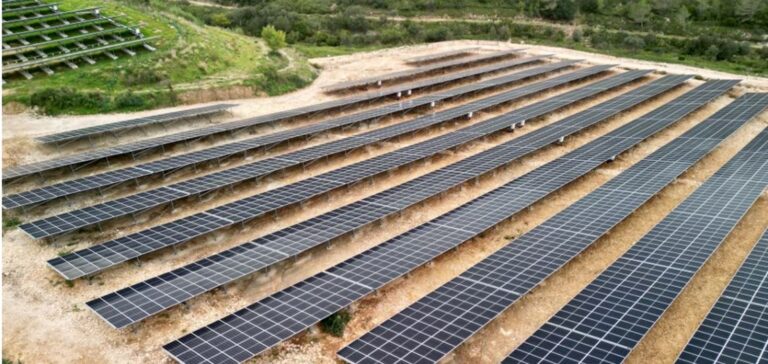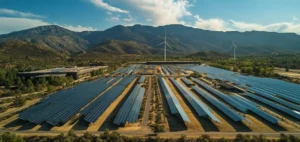Groupe Aéroports de Paris (ADP) has commissioned the Villognon solar power plant, located in the Charente department, marking the completion of a long-term corporate power purchase agreement (CPPA) signed in 2020 with Urbasolar and GazelEnergie. This facility is the third and final installation under the agreement aimed at securing electricity supply for ADP’s Paris airport platforms.
The Villognon photovoltaic plant, with a capacity of 23 megawatt-peak (MWp), is built on a former embankment site originally used during the construction of the high-speed rail line between Bordeaux and Tours. Spanning 23 hectares, the plant will generate 30,000 megawatt-hours (MWh) of electricity annually. All output will be allocated to Groupe ADP, representing a significant share of its airport infrastructure energy supply.
A structuring contract for solar production
The partnership with Urbasolar and GazelEnergie also includes two other plants launched in the Gard and Var departments. Combined, the three solar parks generate 47 gigawatt-hours (GWh) of electricity each year—equivalent to 10% of ADP’s total annual electricity consumption across Paris airports, or approximately 75% of their lighting needs.
The Villognon inauguration ceremony gathered representatives from the involved entities, including Justine Coutard, Deputy Chief Executive Officer of Groupe ADP, and Adrian Meier, Chief Operating Officer of Urbasolar. The event marked the realisation of a five-year-old contract set to run for a 21-year term.
A solar site with strong territorial integration
The transformation of the site into a solar facility was accompanied by measures intended to minimise environmental impact, though this was not the primary focus of the contract. Urbasolar adjusted the construction schedule and protected areas identified during ecological assessments. A hedge of local plant species was also planted to help integrate the facility into the landscape.
According to executives from the three companies, the project demonstrates the ability to leverage complementary capabilities to meet the specific energy needs of a major aviation player. Groupe ADP now ranks among France’s leading buyers of solar power generated by bespoke infrastructure.






















